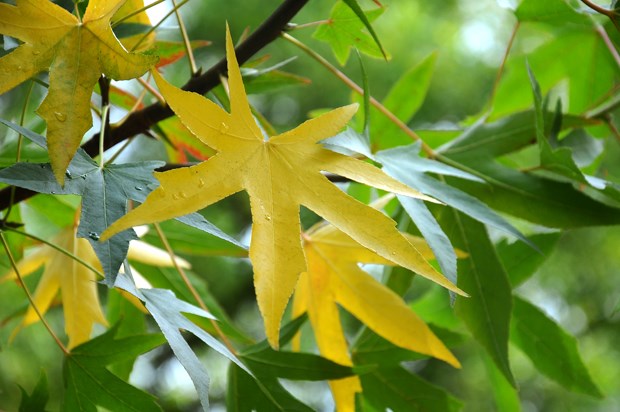North Shore ski resorts are bulking up on snowmaking equipment and putting their faith in the Old Farmer’s Almanac after most long-range weather predictions have forecast a warmer and possibly drier fall and winter season.
Balmy temperatures this weekend could be an indication of the trend in store for the coming months.
Meteorologists with both the Weather Network and Environment Canada say long-range forecasts are pointing to a warmer-than-normal fall for the Vancouver area that could last into the winter with a strong El Nino pattern.
“All the international climate models are forecasting the same thing,” said Matt MacDonald, a meteorologist with Environment Canada. “There’s a 90 per cent chance it will continue through spring 2016.”
El Nino weather patterns occur when ocean waters in the Pacific equatorial region stay higher than normal for a prolonged period of time.
Meteorologists are expecting this year’s El Nino to rival the El Nino weather pattern of 1997/’98 — the strongest in 65 years — in intensity.
While it’s impossible to say exactly what that will mean, “it’s a background climate factor that stacks the cards in favour of a warmer-than-normal winter and a drier-than- normal winter,” said MacDonald.
Other factors contributing to the warmer outlook include a large mass of warm water dubbed “The Blob” by meteorologists that has been sitting off the west coast of B.C. and Alaska, helping to deflect storms and keep high-pressure ridges of hot sunny weather in place throughout the summer.
Generally warmer-than-usual ocean temperatures throughout the Pacific and a jet stream that’s kept warm air over the coast also indicate above-average seasonal temperatures and below-normal precipitation for fall, said Erin Wenckstern, meteorologist with the Weather Network.
For local North Shore ski hills, the forecast that points to a repeat of last year’s season isn’t encouraging.
“It’s fair to say it’ll be a challenging winter for snowfall on the North Shore, particularly in lower elevations,” said MacDonald.
But local ski hills are gearing up for a fight with Mother Nature.
Both Grouse Mountain and Cypress Mountain resorts have spent about half a million dollars each in the past year on an arsenal of snow guns to supplement natural snowfall.
Although the snow-making equipment still needs minimum temperatures to work, at Grouse it can increase total snow volume by more than 40 per cent, said Julia Grant, spokeswoman for the resort.
Grouse has also been busy with summer grooming of its ski runs, which means many of them will be able to open with less snow than would normally be needed, said Grant.
In recent years, Grouse has sought to buffer itself from seasons of low snowfall by diversifying its attractions across all four seasons. These days, the resort has more visitors in summer than in does in winter, said Grant.
Both Grant and Joffrey Koeman, spokesman for Cypress Mountain, are quick to point out that even in the 1997/’98 El Nino winter, both resorts still had a reasonable snowfall, despite the numbers being below average.
“We ended up having a 130-day season (that year),” said Koeman.
When all else fails, there’s also the Old Farmer’s Almanac. Both Grant and Koeman point out that the Almanac — which uses a less scientific approach to weather predictions; one that’s based on folklore and a secret formula — is calling for a colder-than-usual winter.
Meteorologists say don’t bet on that, although “seasonal forecasts always need to be taken with a grain of salt,” MacDonald acknowledged. “Getting the Day 2 and 3 forecasts right is hard enough.”



